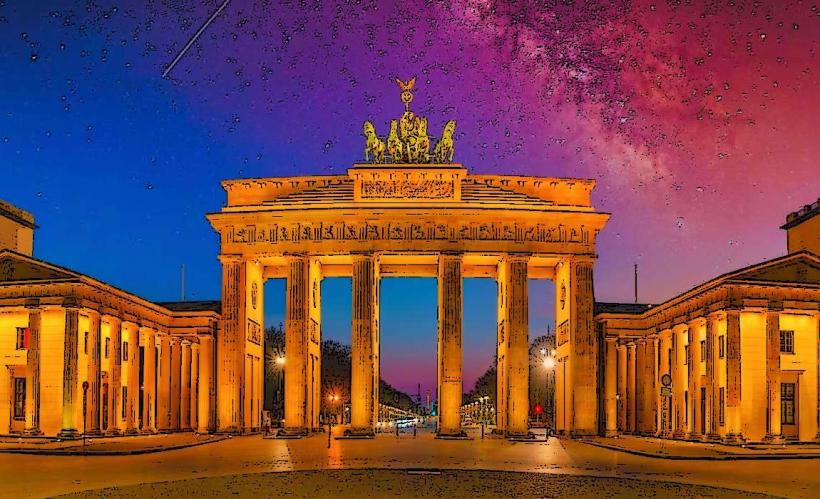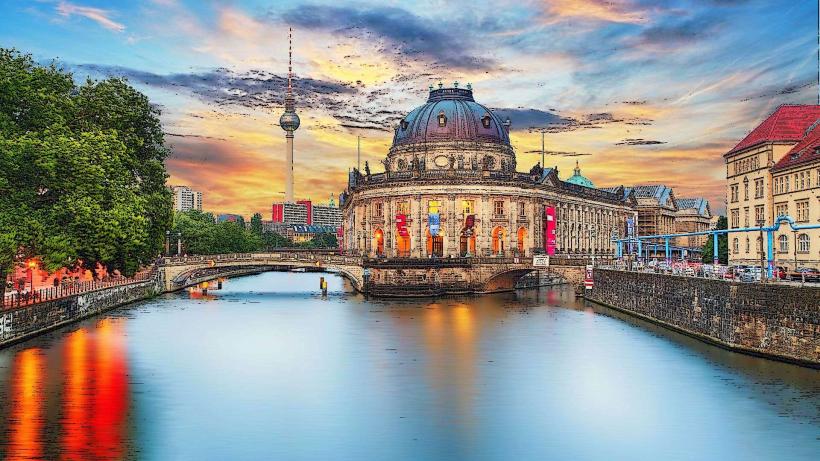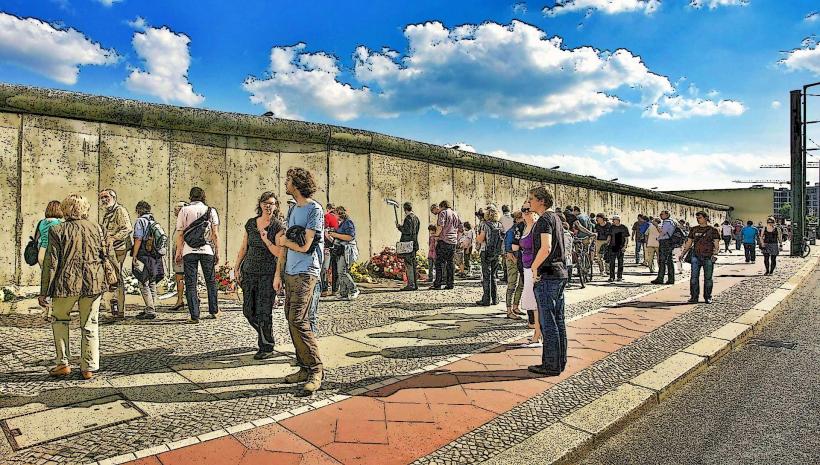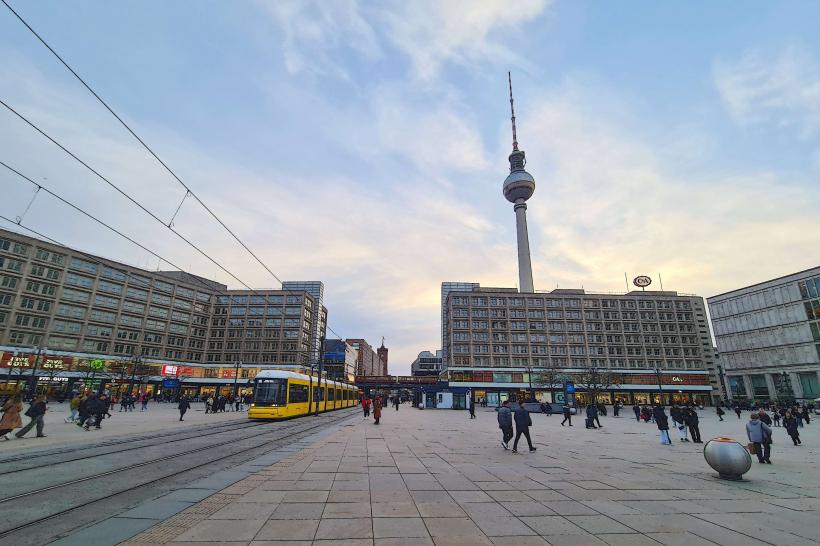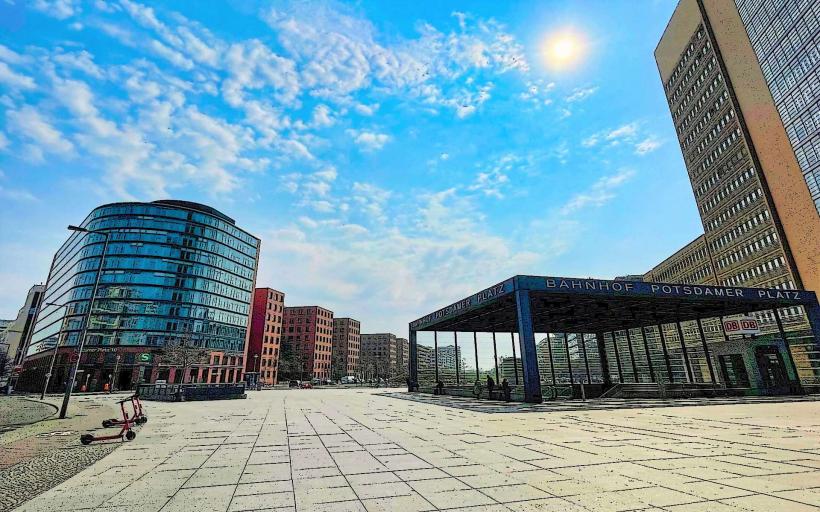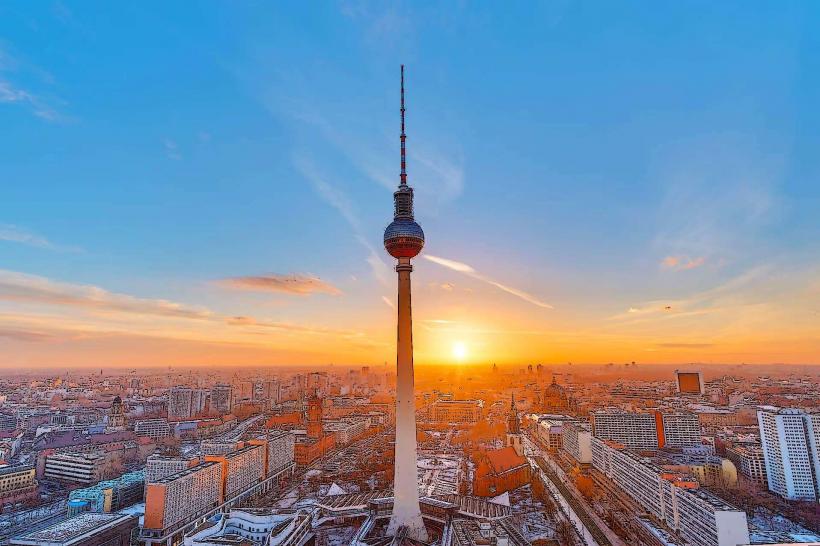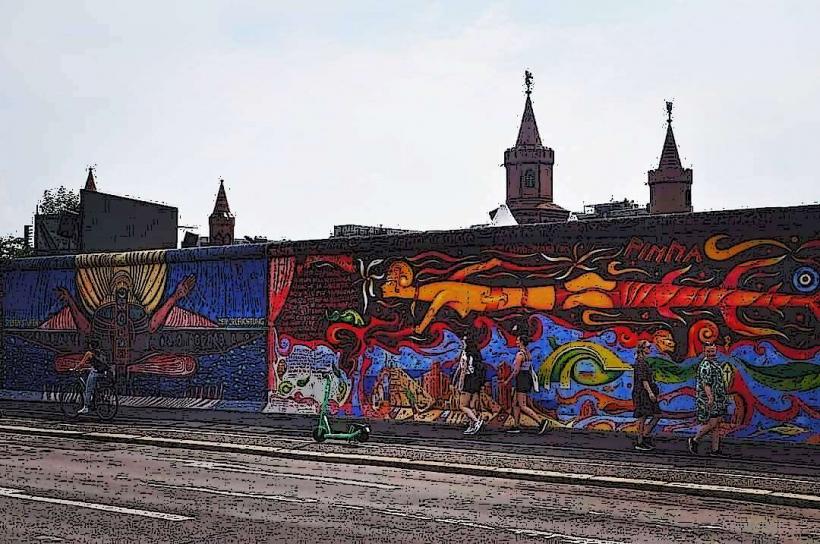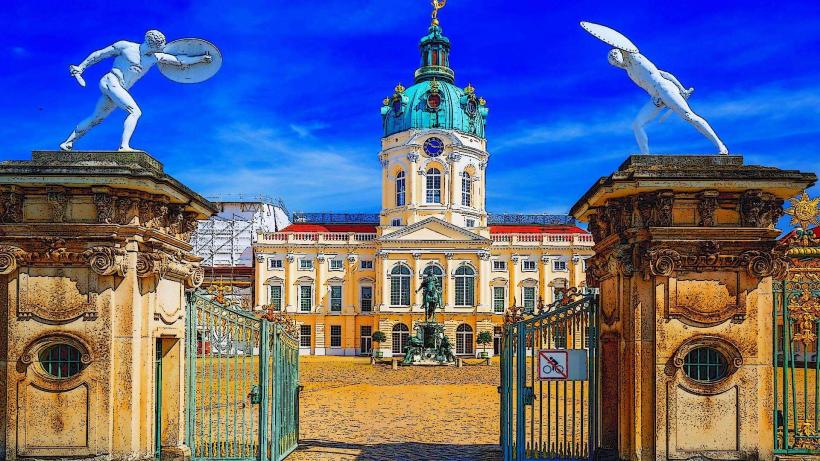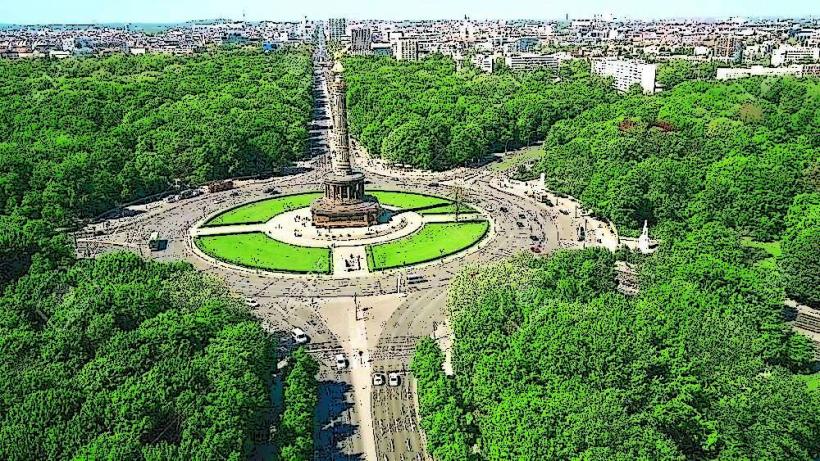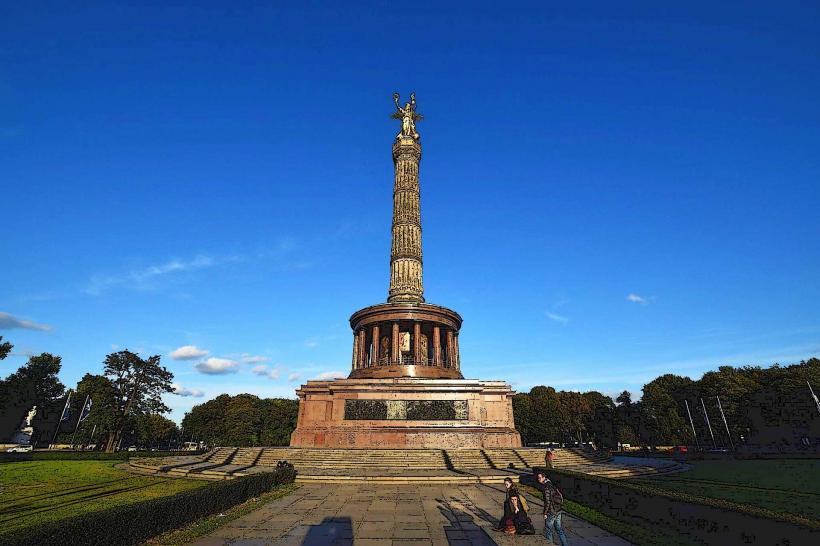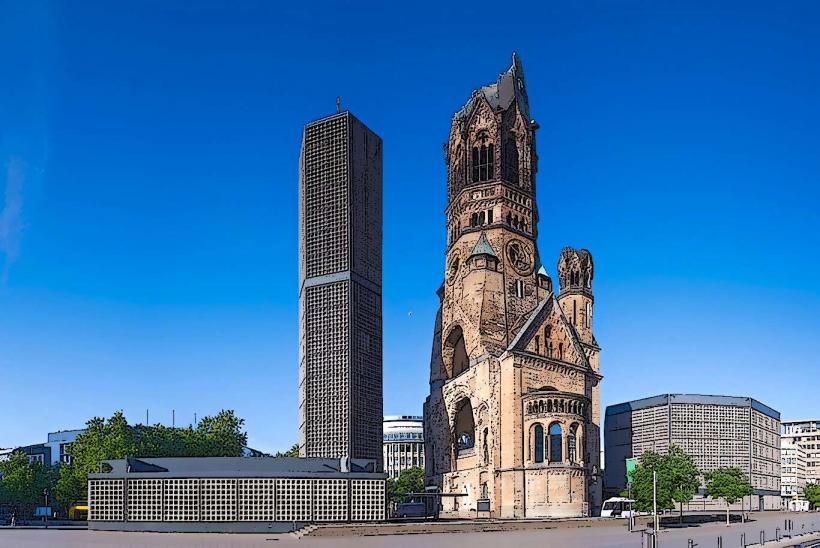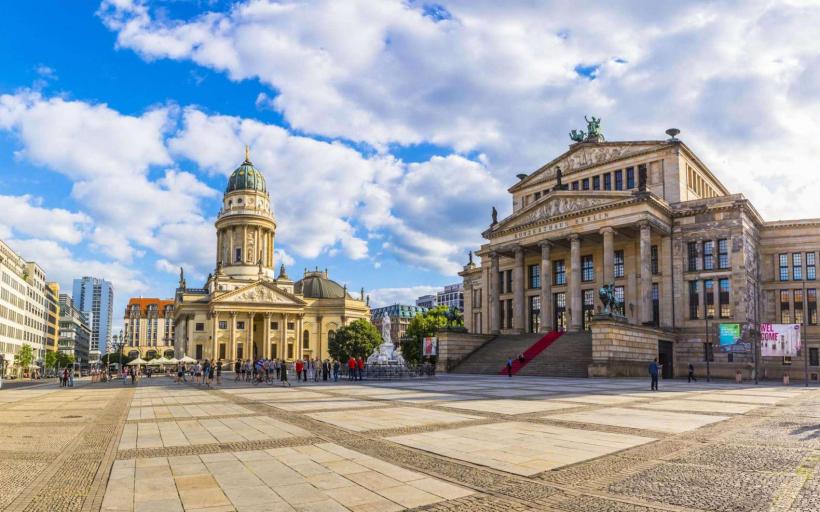Information
Landmark: Checkpoint CharlieCity: Berlin
Country: Germany
Continent: Europe
Checkpoint Charlie is one of Berlin’s most famous and historically significant landmarks, symbolizing the division of the city during the Cold War and the tense stand-off between the East (Communist) and West (Capitalist) during the period of the Berlin Wall. It was the most well-known of the several crossing points between East and West Berlin, and it became a focal point of international intrigue and conflict during the height of the Cold War.
1. Historical Context
- Checkpoint Charlie was established in 1961, shortly after the Berlin Wall was erected by the German Democratic Republic (GDR). The Wall physically and ideologically divided Berlin into East and West, and Checkpoint Charlie became one of the key border crossings between the two parts of the city.
- The checkpoint was specifically designed for foreign diplomats, military personnel, and allied forces to cross between East and West Berlin. It was a symbol of the Iron Curtain, which divided Europe between the Eastern Bloc and the Western Bloc during the Cold War.
- The name "Charlie" came from the NATO phonetic alphabet, where “C” stands for Charlie, which was used to identify this crossing point among the several checkpoints in Berlin.
2. Checkpoint Operations
- East to West Crossing: For the citizens of East Berlin and East Germany, crossing into West Berlin was extremely restricted. Only those with special permission could cross, such as high-ranking officials or certain individuals with permits.
- West to East Crossing: For citizens of West Berlin, there were restrictions on travel into East Berlin, and only those with official documentation could pass through. Checkpoint Charlie was specifically a military checkpoint for foreign nationals.
- The checkpoint was heavily guarded by both East German soldiers and American military personnel. The U.S. controlled the Western sector of Berlin, and their soldiers were stationed at Checkpoint Charlie to monitor and regulate the movement between East and West.
Notable Moment of Tension: One of the most famous incidents in Checkpoint Charlie’s history occurred in 1961, when American and Soviet tanks faced off at the checkpoint in a standoff that nearly escalated into a military conflict. This event, known as the Berlin Crisis of 1961, occurred just after the Berlin Wall had been built. For several days, tanks from both sides faced each other at Checkpoint Charlie, creating immense tension between the superpowers. Fortunately, the standoff ended without violence, but it highlighted the risk of confrontation in Berlin.
3. Checkpoint Charlie as a Symbol
- Symbol of Division: During the Cold War, Checkpoint Charlie became a powerful symbol of the division of Germany and the ideological divide between the Communist East and the capitalist West. The heavily guarded checkpoint represented the political, economic, and military tensions that defined much of the 20th century.
- Escape Attempts: Checkpoint Charlie was also a site of numerous escape attempts by East Germans trying to flee to the West. Some tried to sneak across the border or use hidden passages, while others attempted daring escapes using vehicles or makeshift devices. Many of these escape attempts ended in tragedy, as East German border guards were ordered to shoot anyone trying to cross illegally.
- Global Attention: The checkpoint drew the attention of the international community during the Cold War, as it was one of the few places where East and West came face to face. Checkpoint Charlie was featured in newspapers, films, and television reports as a focal point of the ideological struggle between the United States and the Soviet Union.
4. The Fall of the Berlin Wall
- When the Berlin Wall fell on November 9, 1989, Checkpoint Charlie ceased to be a critical crossing point. The Wall’s fall marked the beginning of the reunification of Germany and the end of the Cold War.
- The removal of the Wall and the opening of the borders were celebrated by millions of Germans, and Checkpoint Charlie became a symbol of the peaceful end of the division of Berlin and the reunification of the city.
5. Checkpoint Charlie Today
- Checkpoint Charlie Museum: Today, Checkpoint Charlie is home to the Mauermuseum – Museum Haus am Checkpoint Charlie. This museum, located just a few meters from the original checkpoint, is dedicated to the history of the Berlin Wall and the various escape attempts made by East Germans. The museum features a vast collection of photographs, documents, and objects related to the Wall and the Cold War, including vehicles used in escapes, tools, and even reconstructed escape tunnels.
- Replica of the Border Guard Booth: In the 1990s, a replica of the original border guard booth was erected at the site, which now serves as a popular photo opportunity for visitors. The replica, along with the surrounding displays and plaques, offers a reminder of the Wall’s legacy and the historical significance of Checkpoint Charlie.
- Tourism: Today, Checkpoint Charlie is a popular tourist destination. It draws visitors from all over the world who come to see the spot where the Cold War division was most symbolically represented. Nearby, visitors can find informational panels and signs in several languages that provide details about the historical significance of the checkpoint and the division of Berlin.
- Commercialization: While Checkpoint Charlie is now a significant historical site, the area around it has become somewhat commercialized, with shops, cafes, and souvenir stands. However, the historic importance of the site remains, and it continues to be an important point of reflection on the events that once divided Berlin.
6. Key Features of the Checkpoint Charlie Area
- Original Signposts: Visitors will see replicas of the original "You Are Leaving the American Sector" sign, which was displayed at Checkpoint Charlie to inform people crossing into the Soviet-controlled zone. These signs were a symbol of the different zones of occupation in post-World War II Berlin.
- Museum Exhibits: The Mauermuseum (Berlin Wall Museum) provides an in-depth look at the history of the Berlin Wall, the stories of escape attempts, and the political implications of the Wall’s construction. The museum’s exhibits include stories of individual escapees, the role of the Allied forces, and the global impact of the Berlin Wall.
- Photographic Displays: There are several photo displays around the Checkpoint Charlie area that show the historic significance of the checkpoint and its role in Berlin’s Cold War history.
7. Nearby Attractions
- Berlin Wall Memorial: A short distance away, the Berlin Wall Memorial provides a more extensive historical experience, offering preserved sections of the Wall, a documentation center, and exhibits that explain the Wall’s impact on the city and its residents.
- Topography of Terror: This museum is located near the former headquarters of the Gestapo and the SS. It offers exhibitions on the Nazi regime and the history of terror in Berlin, providing historical context for the city’s turbulent 20th-century history.
- Brandenburg Gate: Located a short walk from Checkpoint Charlie, the Brandenburg Gate is one of Berlin’s most famous landmarks and a symbol of the city’s reunification after the fall of the Berlin Wall.
8. Visiting Checkpoint Charlie
- Location: Checkpoint Charlie is located at Friedrichstrasse 43-45, in central Berlin. It is easily accessible by U-Bahn (subway) or bus.
- Museum Hours: The Mauermuseum at Checkpoint Charlie is typically open every day of the week, with extended hours in the summer months. It offers a wealth of exhibits related to the Berlin Wall and the Cold War.
- Guided Tours: Many companies offer walking tours of Berlin that include a visit to Checkpoint Charlie, providing additional historical context and a deeper understanding of the Wall’s significance.
9. Conclusion
Checkpoint Charlie is a powerful symbol of Berlin’s division during the Cold War, and today it stands as an important reminder of the struggles and triumphs of those who lived through the city's separation. For visitors, it offers an opportunity to learn about one of the most dramatic and politically charged periods in Berlin's history, while also reflecting on the peace and unity that followed the fall of the Berlin Wall in 1989. Whether you’re a history enthusiast or just visiting Berlin, Checkpoint Charlie is a must-see landmark that provides a window into the past and a reminder of the enduring impact of the Cold War on the city.

